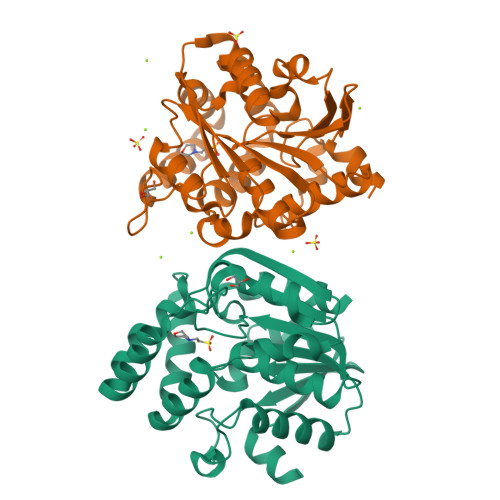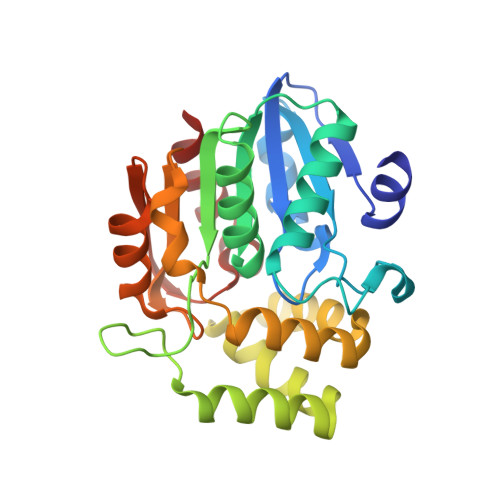Flexibility of the petunia strigolactone receptor DAD2 promotes its interaction with signaling partners.
Lee, H.W., Sharma, P., Janssen, B.J., Drummond, R.S.M., Luo, Z., Hamiaux, C., Collier, T., Allison, J.R., Newcomb, R.D., Snowden, K.C.(2020) J Biological Chem 295: 4181-4193
- PubMed: 32071083
- DOI: https://doi.org/10.1074/jbc.RA119.011509
- Primary Citation of Related Structures:
6UH8, 6UH9 - PubMed Abstract:
Strigolactones (SLs) are terpenoid-derived plant hormones that regulate various developmental processes, particularly shoot branching, root development, and leaf senescence. The SL receptor has an unusual mode of action. Upon binding SL, it hydrolyzes the hormone, and then covalently binds one of the hydrolytic products. These initial events enable the SL receptor DAD2 (in petunia) to interact with the F-box protein PhMAX2A of the Skp-Cullin-F-box (SCF) complex and/or a repressor of SL signaling, PhD53A. However, it remains unclear how binding and hydrolysis structurally alters the SL receptor to enable its engagement with signaling partners. Here, we used mutagenesis to alter DAD2 and affect SL hydrolysis or DAD2's ability to interact with its signaling partners. We identified three DAD2 variants whose hydrolytic activity had been separated from the receptor's interactions with PhMAX2A or PhD53A. Two variants, DAD2 N242I and DAD2 F135A , having substitutions in the core α/β hydrolase-fold domain and the hairpin, exhibited hormone-independent interactions with PhMAX2A and PhD53A, respectively. Conversely, the DAD2 D166A variant could not interact with PhMAX2A in the presence of SL, but its interaction with PhD53A remained unaffected. Structural analyses of DAD2 N242I and DAD2 D166A revealed only small differences compared with the structure of the WT receptor. Results of molecular dynamics simulations of the DAD2 N242I structure suggested that increased flexibility is a likely cause for its SL-independent interaction with PhMAX2A. Our results suggest that PhMAX2A and PhD53A have distinct binding sites on the SL receptor and that its flexibility is a major determinant of its interactions with these two downstream regulators.
Organizational Affiliation:
The New Zealand Institute for Plant & Food Research Limited, Auckland, New Zealand; School of Biological Sciences, University of Auckland, Auckland, New Zealand.






















